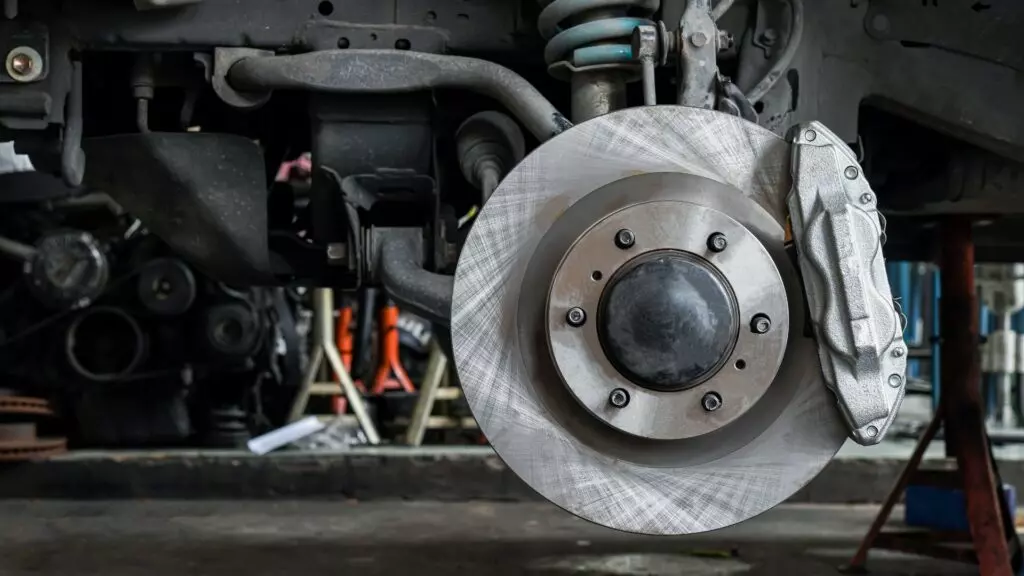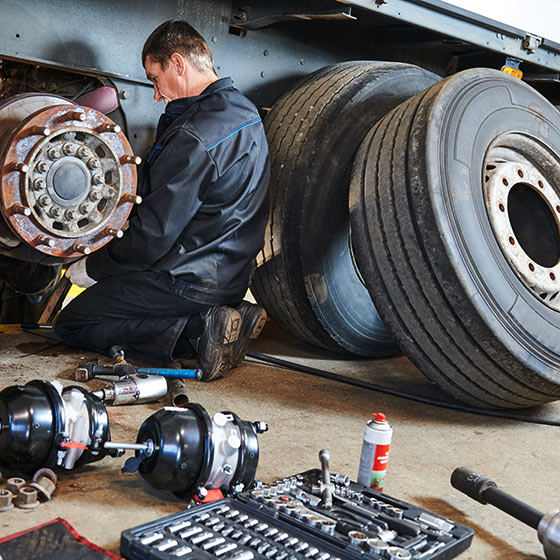When it comes to semi-trucks, the brakes are the most critical safety feature. Not only do they stop the vehicle, but they also help regulate its speed and direction. That’s why it’s crucial to promptly repair, replace, or maintain worn-out brakes to ensure safe driving and prevent accidents.
Modern semi-trucks have air braking systems that consist of two parts: a supply system and a control system. With so much to consider, it can be overwhelming to keep track of all the signs that indicate when your brakes need attention.
At 1st Truck and Trailer Repair, we simplify the process by explaining the warning signs for both braking system sections. Plus, we focus on the latest disk and air brake systems, leaving out the outdated brake drum and shoe system. Ready to learn more? Let’s dive in!
When to replace semi-truck brake pads?
Look out for loud screeching and squealing noises when engaging the brakes. These are often caused by issues with the components inside the wheel. If you also feel an unusual amount of heat, it could indicate a problem with the brake pads. Checking the brake pads typically requires removing the hubcap or the wheel for a better view.
As a general rule of thumb, semi-truck brake pads should be replaced every 30,000 miles. But routine maintenance checks should also include compressed air PSI, caliper tuning, and rotor wear. While replacing brake pads and compressed air may be easy, it’s recommended to bring your truck to an automotive repair shop for caliper repairs or rotor replacements, which require more expertise.

The brake pedal either sinks down too far or has no resistance in it at all
If your brake pedal feels too soft or too hard, it could indicate a problem with the braking system’s supply or control system. While the wheel side of the braking system already has plenty of components, the engine bay has even more. If you have to press down hard on the brake pedal before the brakes engage, it may be time for a tune-up.
A faulty brake pedal is self-explanatory, but if it has no resistance or too much resistance despite being in good condition, one of three components may be malfunctioning: the compressed air reservoir may be empty, the air compressor may not be working, or the air dryers may be allowing moisture to build up in the brake lining. If one of these components fails, it will require much more braking power than usual to engage the brakes.
There are air leaks coming from the brakes
Make sure to check for any compressed air leaks in both the engine bay and wheels. Low air pressure is indicated by the red wig-wag near the reservoir. Even though air brake hoses can work with slight leaks, it will require more foot pressure to engage. If the brakes start to drag or feel compromised, it’s a sign that the air brake functionality is compromised.
Compressed air is critical in keeping the air braking system running smoothly. Without it, moisture and uncompressed air can fill the air hoses, leading to decreased brake performance. Compared to hydraulic brake fluid or compressed air, uncompressed air easily expands and contracts, leading to brake failure. Don’t take any chances, and address any compressed air leaks or issues with your air brake system promptly.
Risks of Driving With a Faulty Brake Line
Driving a vehicle with hydraulic fluid leaks or low compressed air can lead to disastrous consequences. The risk of not being able to stop the vehicle increases as it moves, particularly in commercial trucks. In the event of an accident, both the vehicle and other internal systems may be damaged. It’s best to avoid such scenarios as the cost, legal, and mental repercussions are not worth it. Instead, call a local towing company to transport the vehicle to the nearest repair shop for a safe and economical repair.

